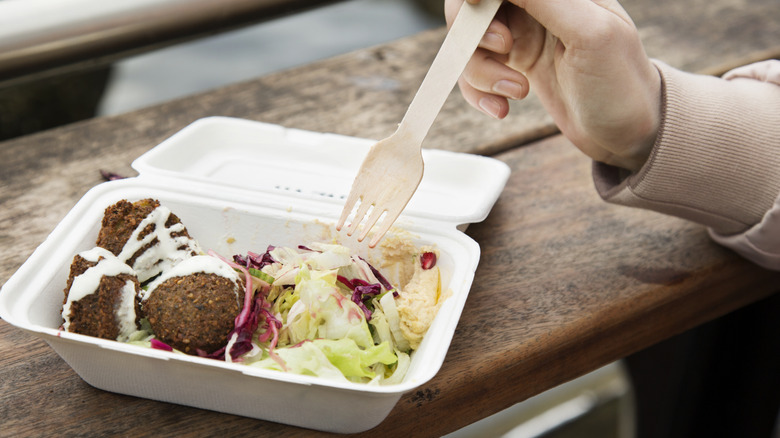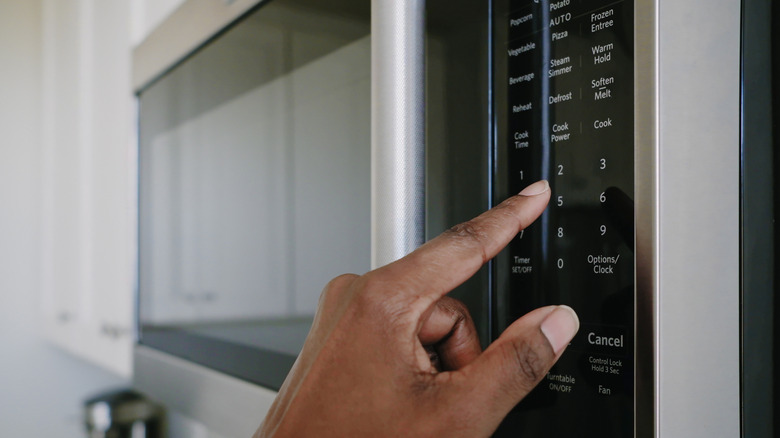There Are Some Takeout Containers You Really Shouldn't Be Microwaving
Whether you've ordered takeout or brought home leftovers from a restaurant, your food may be packaged in a plastic or styrofoam container. While these materials make transporting and storing food convenient, they're two of the most common things you should never put in your microwave. In fact, the only safe takeout containers to microwave are those made out of paper, like Chinese takeout boxes (with the metal removed, of course).
The reason why plastic containers aren't safe to microwave is because they heat up alongside your food. This allows the chemicals inside the plastic to leach out and into what you'll be eating. Among these chemicals is bisphenol-A (BPA), which can build up in the human body and potentially cause health issues such as fertility problems, cardiovascular disease, and even cancer. Moreover, a study released in 2023 in the Environmental Science & Technology journal found that microwaving causes containers to release more microplastics into food than they would at room temperature or in a refrigerator.
Likewise, styrofoam is potentially dangerous to put in the microwave as it can release chemicals and melt when heated. In terms of harmful chemicals, styrofoam contains styrene, which the National Institute of Environmental Health Sciences classifies as "reasonably anticipated to be a human carcinogen" in its 2011 Report on Carcinogens. The issue is so serious that some states, such as Maine and New York, have banned polystyrene foam food containers. Although microwave-safe styrofoam containers do exist, and are marked with a symbol resembling a microwave with wavy lines, we'd still avoid heating your food in them. Their insulation properties make them really inefficient for reheating leftovers anyway.
How to safely reheat your leftovers
If you have food in a takeout container and want to reheat it in the microwave, your best bet is to transfer your leftovers into a microwave-safe container made from glass or ceramic, like a plate or bowl. Not only will this make heating more efficient, but it will prevent any chemicals from leaching into your food.
When reheating, try to do so in intervals, even though it takes a bit more effort. This means stopping the process once or twice to stir your leftovers so that they can reheat evenly without any hot or cold spots. You can also mitigate this by spreading your leftovers out in a layer instead of piling them all into the center of a bowl. If the layers are too thick, you'll end up with hot food on the top and cold food in the middle. Likewise, if you don't want your leftovers to dry out when reheating, you can place a moist paper towel over them. To avoid any mistakes when microwaving paper towels, make sure they are microwave-safe and only heat them in two-minute intervals. This will create steam that will prevent your food from losing moisture.
Now, if you don't have a safe container to use in the microwave, don't throw in the towel and simply use an unsafe takeout container. You can always reheat leftovers on the stove or in the oven instead — even pizza slices can be reheated in a pan with a little water. Just make sure to take things low and slow to prevent overcooking.

